In fall of 2019, Chris Waldrum of Inspired Nutraceuticals introduced the world to a potent stimulant-free pre workout named FSU. It focused on nitrate-driven nitric oxide pumps, but also had a ton of hydration components involved that simply lit everyone up.
FSU blew the doors down, but Inspired knew they could do one better. In 2021, they not only introduced everyone to their latest stimulant-based pre workout in DVST8 Global, they're pairing it with a new version of its stim-free counterpart: FSU DYEHARD.
FSU DYEHARD: Premium 3D Pump Potentiator
As you can tell with the 3D in the bottle's subheading, this one has the patented new 3DPUMP Breakthrough combination of citrulline, glycerol, and Amla fruit extract - but Inspired kept the nitrates and hydration components as well.
If you're a fan of betaine and the "swole" cell volumization benefits you can get from it, you're going to love this one -- not only do we have a 2.5 gram clinical dose of the muscle-building agent in two scoops, we also have a switch to betaine nitrate as well. Paired with 3D PUMP's glycerol and the electrolytes inside, this is an incredibly unique, feel-good pump experience.
Just make sure you drink enough water with it! The details are below, but before we get ready to FSU, check out PricePlow's coupons, prices, and Inspired Nutraceuticals news alerts:
Inspired Nutraceuticals FSU Dyehard Premium – Deals and Price Drop Alerts
Get Price Alerts
No spam, no scams.
Disclosure: PricePlow relies on pricing from stores with which we have a business relationship. We work hard to keep pricing current, but you may find a better offer.
Posts are sponsored in part by the retailers and/or brands listed on this page.
This area is reserved for Team PricePlow's upcoming Ingredients video.
Subscribe to our channel and sign up for notifications so you catch it when it goes live!
FSU Dyehard Ingredients
Get ready to FSU -- doses below are listed in two scoop servings:
-
3D PUMP Breakthrough (L-Citrulline (Vegan Fermented), Glycerol, Amla (Emblica officinalis) Fruit Extract) - 6000 mg
The industry's newest pump ingredient, 3D PUMP Breakthrough is a patented blend of three fantastic components with the following doses:[1]
- 3 grams of vegan fermented L-citrulline
- 1.2 grams of glycerol, and
- 150 milligrams of Amla fruit extract
This may sound familiar, because it's already in FSU Dyehard's stim-driven partner, DVST8 Global, which means that when you stack them, you're about to get your arms blown off! (See the stacking section below).
Let's recap the components of 3DPUMP Breakthrough, starting with Amla since it's the newest one:
Indian Gooseberry?! Meet Amla Fruit Extract!
Scientifically known as Phyllanthus emblica, Amla fruit also has the fantastic name of Indian Gooseberry. The fruit has been called "the ayurvedic wonder"[2] because it's packed full of cardiovascular-enhancing antioxidants that can increase endothelial function and limit platelet aggregation.[3]
We don't have athletic-based research (save for what's in the patent's pilot study[1]), but ingredients that improve endothelial function generally improve blood flow and thus workout performance too.
Amla seems to be the secret weapon that bridges the gap with citrulline and glycerol, two of the more known entities in 3D PUMP:
L-Citrulline - The Standard in Nitric Oxide Boosting
With two scoops of FSU Dyehard, you get a clinical dose of 3 grams[4] of L-Citrulline, which is the precursor for the amino acid L-arginine that then goes on to help your body generate more nitric oxide.[5] Taking citrulline has been shown to work better than L-arginine itself,[6-8] which is why you see it in nearly every pre workout nowadays, so we're happy it was included in 3D PUMP.
When we increase nitric oxide levels, we achieve vasodilation in our blood vessels, which means they widen and relax. This then gets us improved blood flow (and synergizes with the Amla above), giving us greater nutrient delivery, but more importantly... better pumps!
With this process, ATP production increases, and that can lead to greater work output (if you hit it hard enough) as well as better recovery.[9-11] Citrulline helps the body remove metabolic waste, and that can lower perceived exertion, reduce soreness, and ultimately improve endurance.[12] All great things to have in the gym.
One final note: while the pilot study used 150 milligrams of amla, 3DPUMP is confirmed to contain 165 milligrams amla.
Now that blood flow is covered, 3D PUMP attacks the hydration angle:
Hyperhydration with glycerol
In Episode #046 of the PricePlow Podcast, Chris Waldrum of Inspired Nutraceuticals tells us about his past year and what's coming in 2021!
To pull in more water -- and keep it inside -- 3D PUMP uses the sugar alcohol known as glycerol, which boosts the body's total water volume and improves water retention when taken with enough fluids.[13] We call this "hyperhydration",[14] and it can lead to improvements in endurance as well as better heat tolerance -- again, when taken with enough water.[15-17]
Anytime you see glycerol on a label (or 3D PUMP for that matter), just realize that you're going to want to use plenty of water to get the best effects. Much of this is covered in our article titled Glycerol: The Ultimate Guide for Hydration, Heat Protection, and Pumps,[18] where you can learn more about the ingredient.
What 3D PUMP does uniquely here is to use citrulline as the carrier for glycerol - so there's no need to mix it with silica. Glycerol's carrier is actually an active ingredient - very smart!
Note: As an update, in 2023, new research came out showing 3DPump's efficacy against a greater dose of L-Citrulline. Learn about it in our new 3DPump study coverage.
-
Betaine Anhydrous - 2500 mg
Get ready for a one-two betaine punch that's going to put us well over the clinical daily dose! In two scoops, FSU Dyehard starts with the "standard" 2.5 gram clinical dosage of this incredible muscle-building, power-inducing, hydrating osmolyte ingredient also known as trimethylglycine (TMG).
The placebo effect was definitely strong with this group. But... the real gains obliterated placebo in due time![19]
In our article on Inspired CR3 (Inspired Nutra's enhanced creatine capsule supplement), we explain that creatine is a phosphate donor. Betaine has some similar functions, but is instead a methyl donor, providing precious methyl groups that carry out numerous beneficial health functions, including homocysteine level reduction.[20]
As an osmolyte, betaine helps regulate fluid balance in and across cells,[21] and can help protect the the body from heat stress[22] while improving strength.[19,23]
There are several studies regarding performance improvement with betaine, and many of them use high doses,[24-29] but we have high doses here as well once we add in the betaine from our next ingredient.
In 2013, however, a couple of major studies were published showing muscle gains when taking 2.5 grams of betaine per day.[19,23] The researchers showed that with a training program, betaine use for six weeks led to 5.3 pounds of lean muscle mass and 6.4 pounds of fat reduction, for a total 3% downward body fat adjustment![19,23] The best part? The researchers saw improved arm size as well - which is awesome if you're planning to FSU.
Leave it to Chris Waldrum and his team at Inspired Nutraceuticals to make creatine pills interesting again, thanks to two added synergistic ingredients in CR3!
Those same researchers later showed that the fat loss effects work in women too, at this same dose - 2.5 grams per day.[30]
We love this ingredient paired with glycerol, so that you get two osmolytes. Once again drink plenty of water, and get ready to add in even more of it:
-
Betaine Nitrate (NO3-T) - 2000 mg
Think you had enough betaine? Think again! Not only does Inspired Nutra go beyond clinical with the fantastic pump/strength/hydration agent, they blind it to a solid dosage of nitrate in the form of betaine nitrate. This doubles -- actually triples -- down on betaine, since we also have 2g betaine nitrate in DVST8 Global.
In our DVST8 Global post, we cited why Inspired shifted from arginine nitrate to betaine nitrate, and the same deal applies with FSU:
We switched from NO3-T Arginine Nitrate to NO3-T Betaine Nitrate because betaine nitrates yield more nitrates per material than arginine nitrate.
-- Inspired Nutraceuticals
More nitrate, but as we know, we have plenty of betaine too, so this is a best-of-both-worlds situation.
How nitrates boost nitric oxide levels
Nitrate (written as NO3-) follows a unique and independent pathway that differs from the citrulline → arginine → NO synthase pathway. Instead, they get metabolized into nitrite, and enter the bloodstream from the intestines. In the salivary glands, we have a group of enzymes that then convert it to nitric oxide there![31-33] This is known as the nitrate-nitrite-nitric oxide pathway.
But even though the pathway is different, the end result and benefits of increased nitric oxide persist -- better athletic performance and increased endurance thanks to improved blood flow.[34]
The countless benefits of nitrates
More betaine gains -- here's one place where placebo doesn't rule: arm size! Betaine built bigger arms... in trained subjects![19]
Various studies have shown that well-dosed nitrate, like we have here, can improve numerous metrics:
- Better blood flow[35]
- Lower oxygen requirements for training[35-38]
- Improved strength (through increased force / power production)[39,40]
- NO increases[39,41]
- Increased endurance[37,38]
- Improved cellular energy[40-42]
- Better recovery[40-42]
The meta analysis cited above covers these benefits as well.[34]
Betaine nitrate is roughly 65% betaine, so we get an incredible 700 milligrams of nitrate here paired with another 1300 milligrams of betaine, meaning FSU Dyehard has ~3.8 grams of total betaine in two scoops -- drink up with this one!
Since there are two grams of betaine nitrate in both DVST8 Global and FSU, we have a section on stacking below this ingredient analysis. This is a lot of nitrate, and we don't suggest users take two scoops of both products simultaneously unless they really know what they're doing and are able to monitor blood pressure.
-
Sodium Glycerophosphate (NutriGP) - 500 mg
Going beyond our osmolytes (betaine and glycerol) above, Inspired Nutraceuticals takes hydration to the next level with three electrolyte-based ingredients: sodium glycerophosphate, potassium glycerophosphate, and added Pink Himalayan Rock Salt.
First, let's talk about mineral glycerophosphates, and then get into the specifics.
Mineral glycerophosphates: glycerol, phosphate, and our minerals
Mineral Glycerophosphates are mineral salts that provide bioavailable amounts of mineral content. Glycerophosphates are based upon glycerophosphoric acid, which is actually glycerol 1-phosphate -- a glycerol monophosphate that's attached to a phosphate group.[43]
If you're uninterested in the chemistry lesson, the point is that we're binding our minerals to both glycerol and phosphate, two incredible components. We often neglect phosphate, which is one of the body's electrolytes, providing us with critical phosphorus and necessary for the production of ATP (adenosine triphosphate).[44]
These glycerophosphates can then be bound to minerals, and in this case, Inspired Nutra has chosen sodium and potassium.[45] Sodium glycerophosphate (NaGP) is about 19% sodium, and has been used successfully in pediatric parenteral nutrition solutions for hydration purposes.[46,47]
The athletic benefits of sodium
At this point, most athletes know not to fear sodium, given its importance to performance and hydration. Sodium (and salt) is needed for muscular contractions[48] and should never be neglected by anyone who steps foot in a gym.[49]
If you're still not on the sodium/salt bandwagon, we implore you to read the paper titled "The Importance of Salt in the Athlete's Diet".[49]
-
Potassium Glycerophosphate (NutriGP) - 500 mg
With potassium glycerophosphate, the same base research above still applies,[43,44] only now we have potassium bound in. It's blended with a bit of rice flour to enable stability, and is ultimately about 11% potassium content.
Potassium is the yin to sodium's yang, and while sodium always gets the most attention, we believe that potassium deserves more. The mineral is sometimes called a "shortfall nutrient" because many Americans are deficient and have issues getting enough of it in their diets.[50,51]
When we do get enough in, we can get cardiovascular health benefits, such as lowered blood pressure and lower heart disease risk.[50,52,53] It may also help with bone mineral density improvements and calcium retention.[54,55] There isn't a great deal of athletic research on it though, but given that so many are deficient we believe it's smart to add in when possible.
-
Pink Himalayan Rock Salt - 300 mg
To improve both flavor and sodium status, Inspired adds a bit more Pink Himalayan Rock Salt, which will mostly contain sodium, but also have trace minerals as well. This will provide the added benefits described above,[48,49] and rounds out an incredible hydration and osmolyte matrix in FSU.
-
Pine Bark Extract (Pinus Pinaster) (Bark) (std. to 95% Proanthocyanidins) - 300 mg
Last but certainly not least, we have a very large dosage of pine bark extract, also known as Pinus Pinaster. Normally we see 200 milligrams, but not with FSU - Chris Waldrum and team provide 300 milligrams -- 50% more than competing pump supplements, putting this one way over the top!
Pine bark extracts are generally known for their powerful antioxidant profiles, especially its polyphenolic monomers, phenolic acids, and proanthocyanidins, which drive much of its antioxidant activity.[56]
A few studies have shown that various pine bark extracts can increase blood flow,[57-59] consistently showing improved nitric oxide levels. The extract works via free radical scavenging, but has also been shown to stimulate eNOS,[60] or endothelial nitric oxide synthase, a messenger enzyme that synthesizes nitric oxide. This means we have both direct and indirect effects from pine bark extracts, and a mechanism that's different from the above ingredients.
Again, Inspired included a powerful 300 milligrams if you two scoop it, so get ready to FSU!
Flavors Available
Chris Waldrum and his team at Inspired Nutraceuticals do not mess around with flavors - it's been one of their strong spots since we first started covering them long ago:
Stacking with DVST8 Global? Read this first (high doses of betaine nitrate!)
Before we get into the FSU ingredient label, we want to discuss stacking strategies with DVST8 Global. Between the two supplements, if you were to double-scoop both of them, you'd be getting 4 grams of betaine nitrate, which is a very large dose. We're not yet sure of the "official" recommendations, but our general stance is to max out at around 3 grams total unless you're monitoring blood pressure and know what you're doing.
This means, if stacking DVST8 Global in, we'd generally recommend a maximum total of three scoops across the two supplements, split however you prefer your stimulants from DVST8. We'll update this section if those suggestions change.
In addition, these ingredients should never be combined with ED drugs.[61]
Time to FSU
Get ready to pound some water and pound some weight. Inspired Nutraceuticals put together a fantastic upgrade to their original FSU (which was already awesome), tripling down on betaine. The combination of nitrates, 3D PUMP, and plenty of hydration-boosting ingredients means that pumps are coming in from all angles.
Where Inspired really sneaks one in, however, is with a pine bark extract dose that's 50% greater than nearly everyone else's. If you're feeling a little something extra here, don't be surprised if it's that final boost down at the bottom of this formula.
A solid stack for those looking to chase some muscle gains is Inspired Nutra's CR3 creatine capsules, which will also add in some absorption-amplifying ingredients and make for an incredible stim-free stack if you're keeping the stims away.
As always, Inspired hits it hard in an effort to fuel what Inspires you and help you FSU.
Inspired Nutraceuticals FSU Dyehard Premium – Deals and Price Drop Alerts
Get Price Alerts
No spam, no scams.
Disclosure: PricePlow relies on pricing from stores with which we have a business relationship. We work hard to keep pricing current, but you may find a better offer.
Posts are sponsored in part by the retailers and/or brands listed on this page.
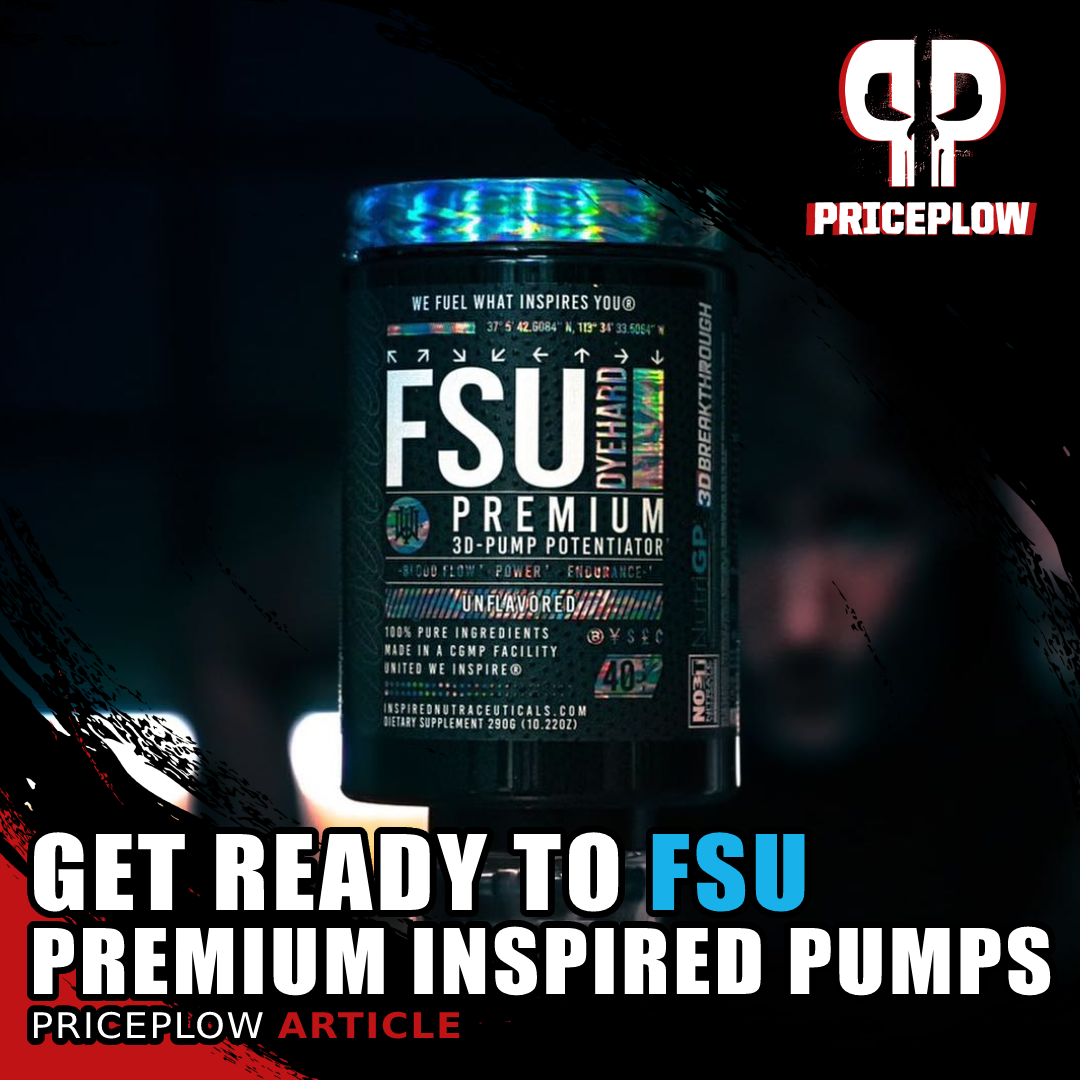
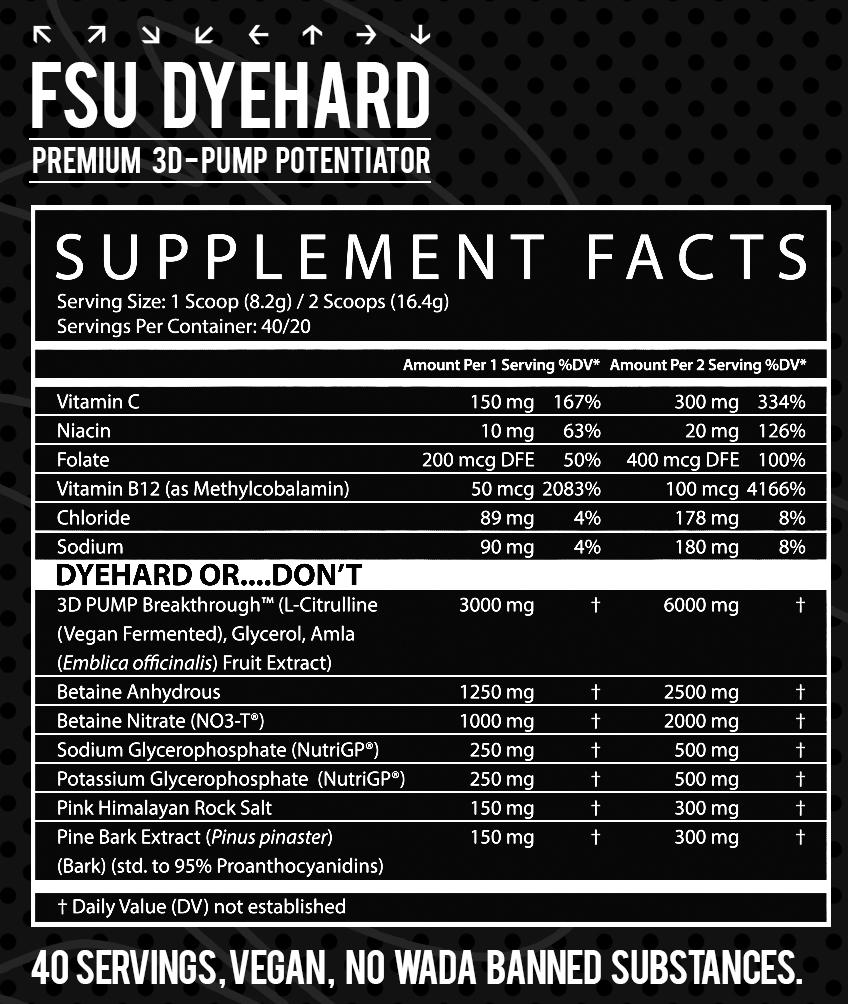

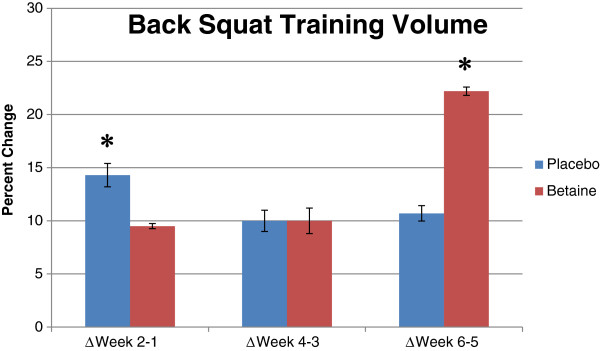
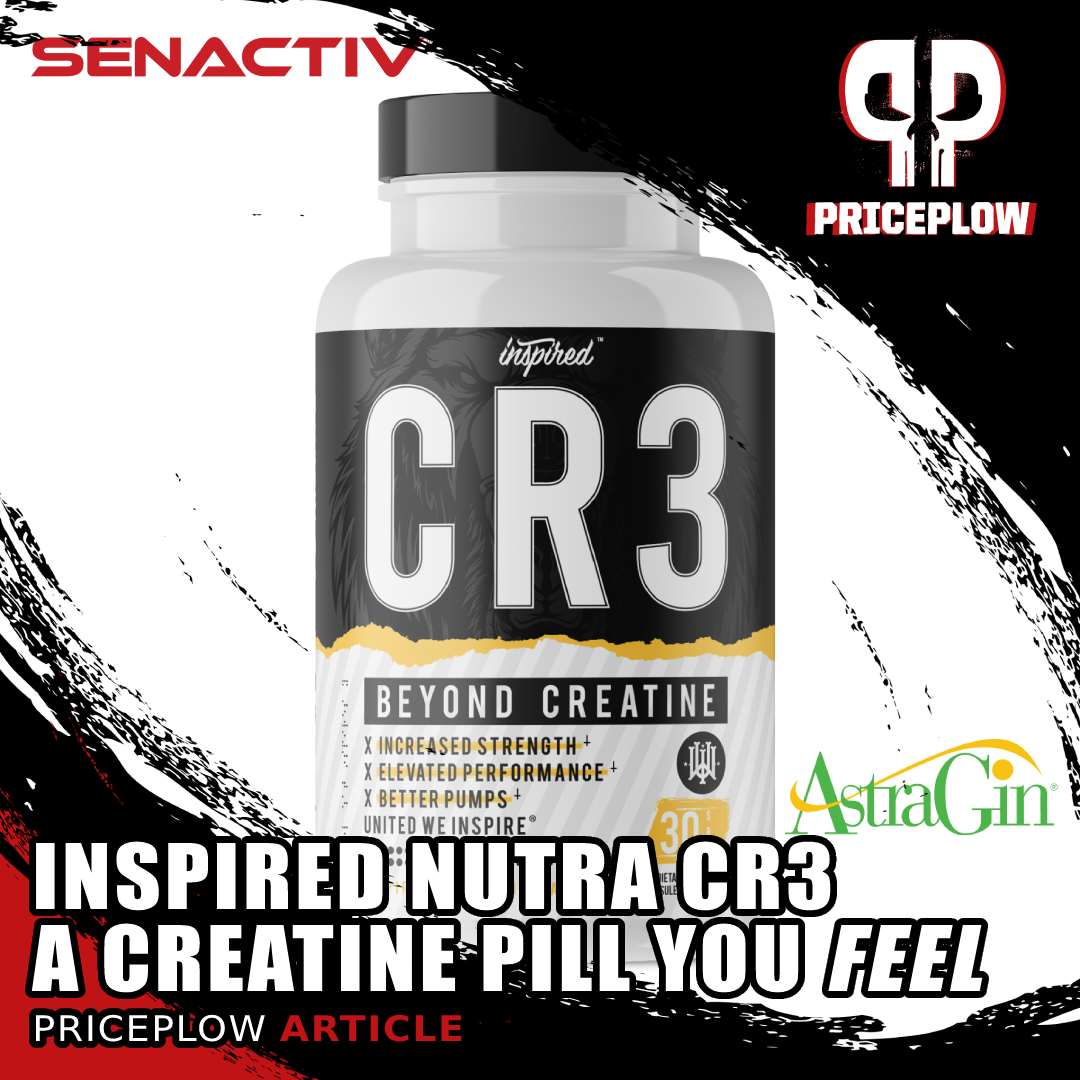
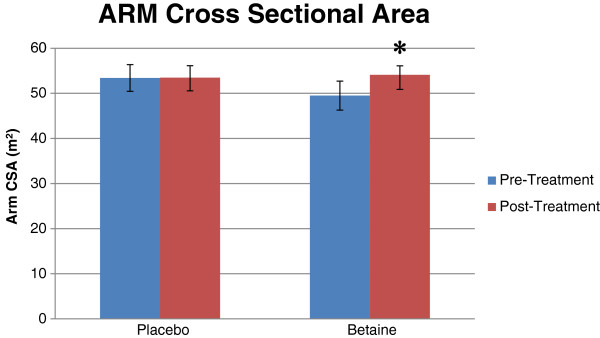
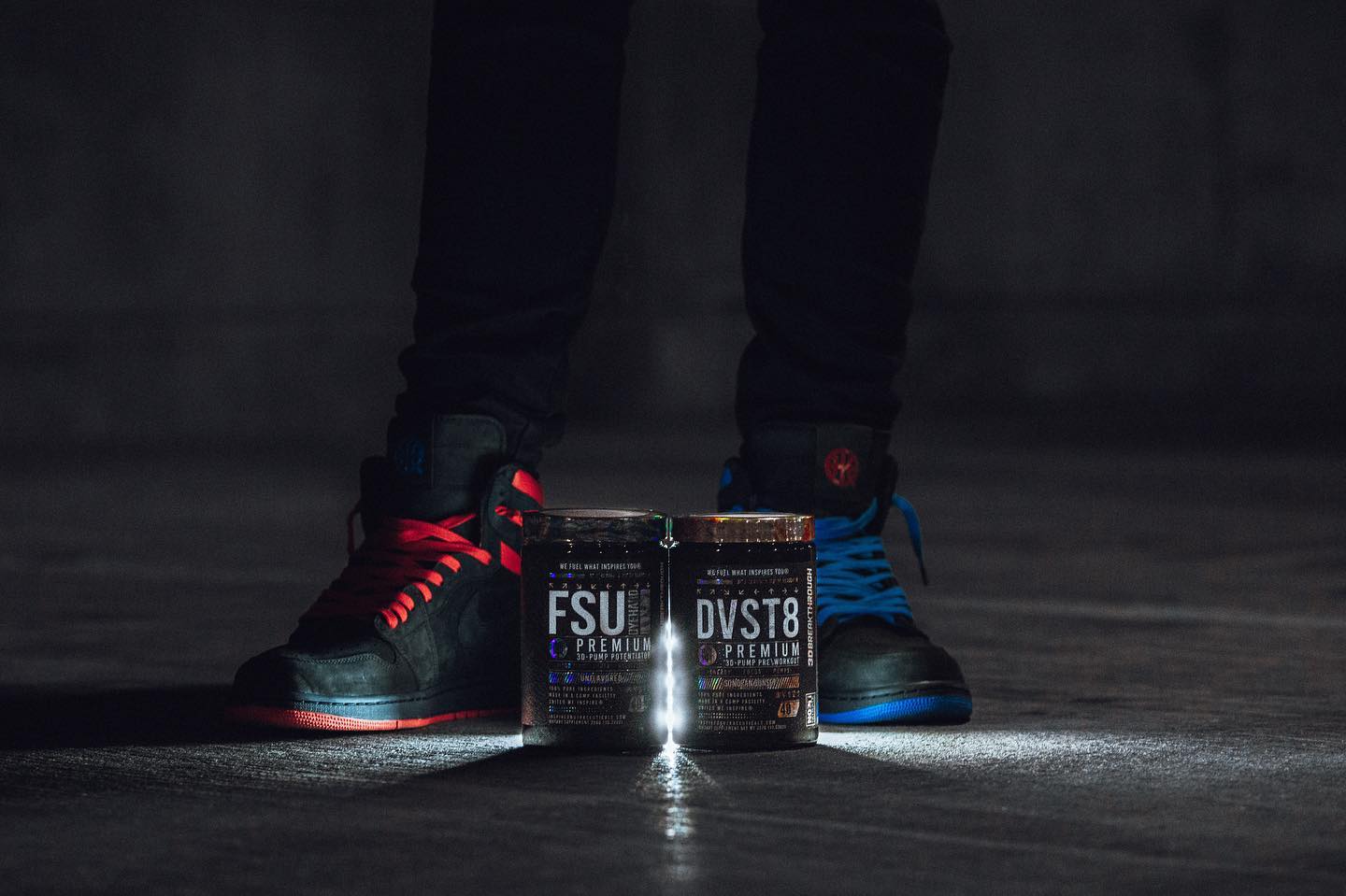
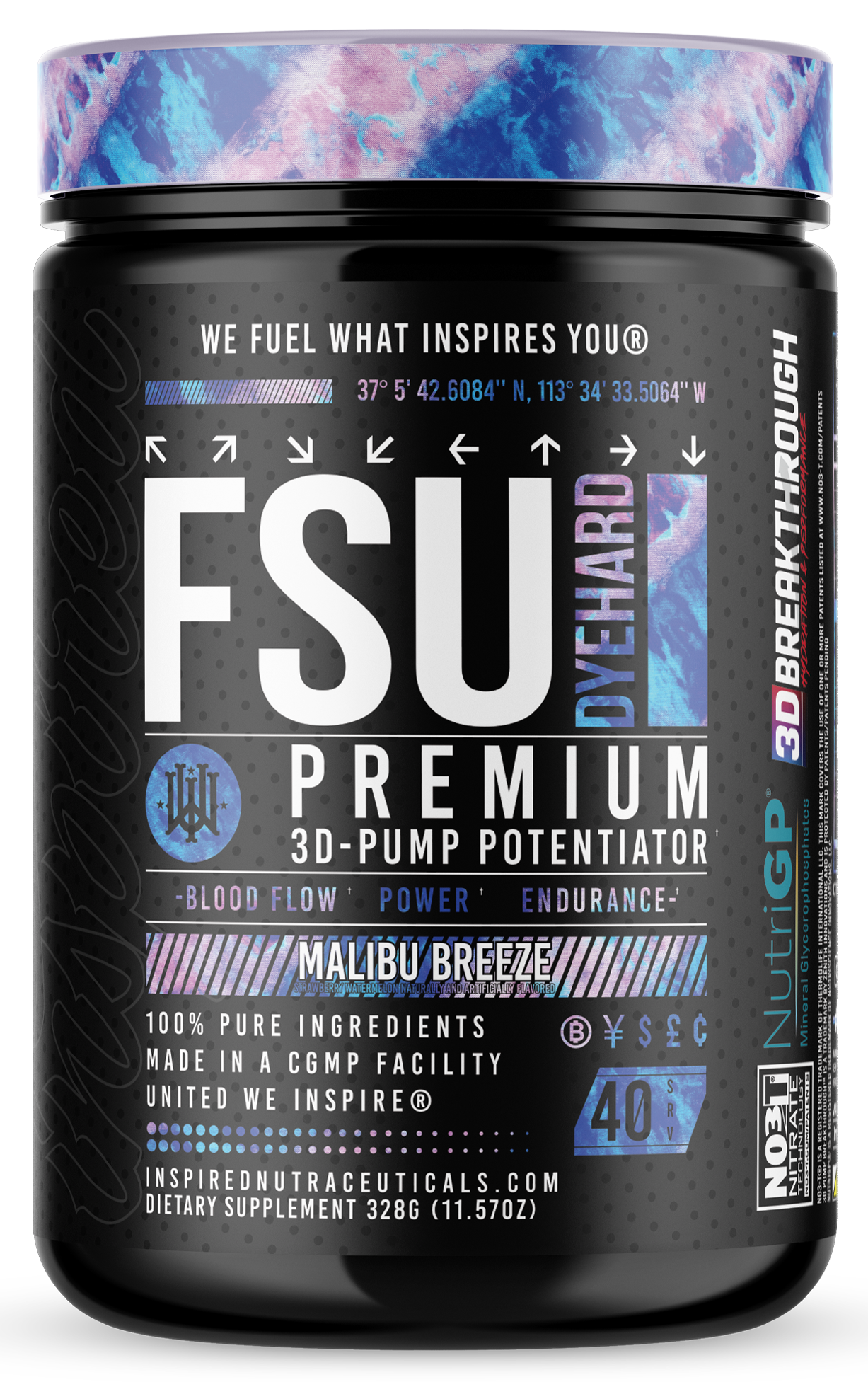
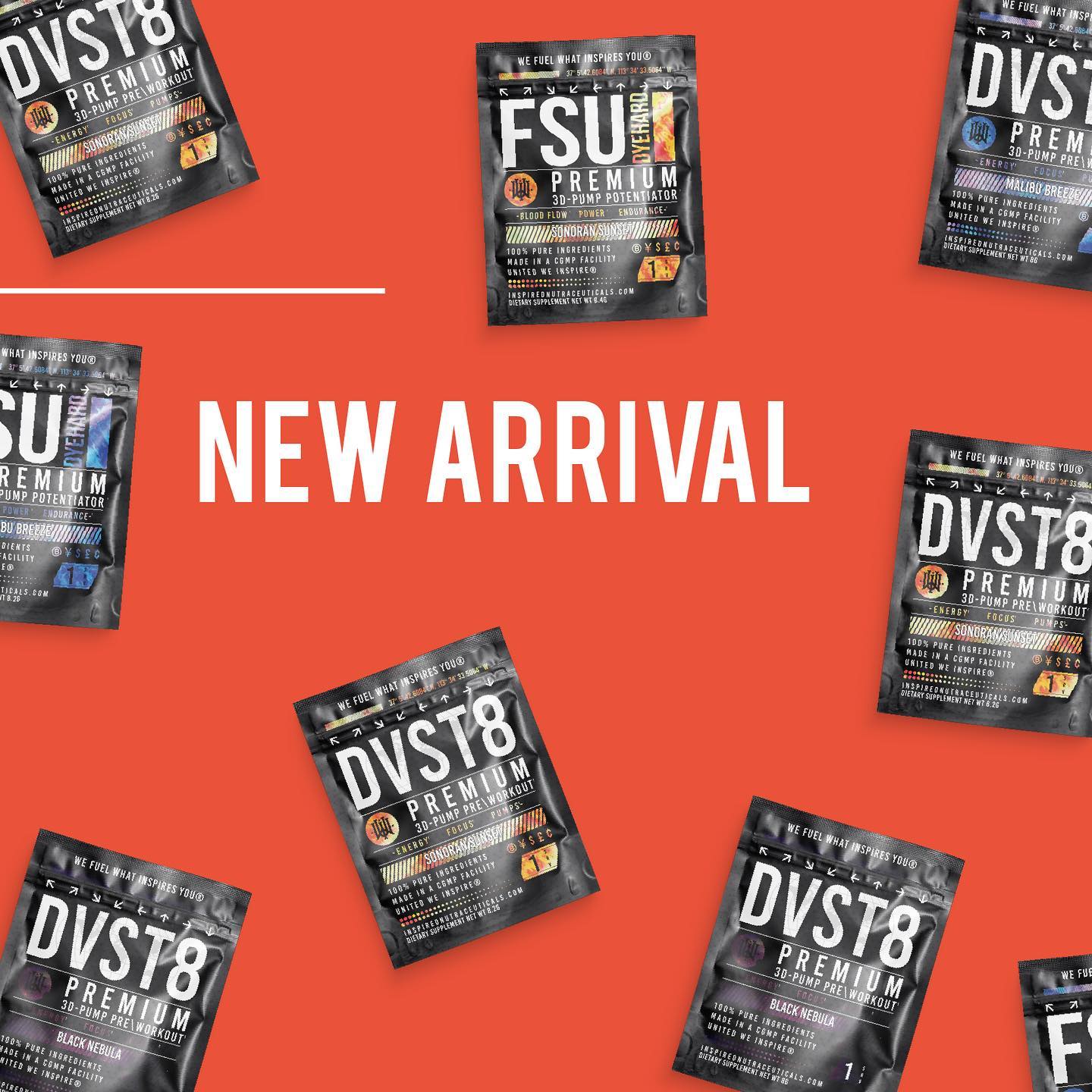
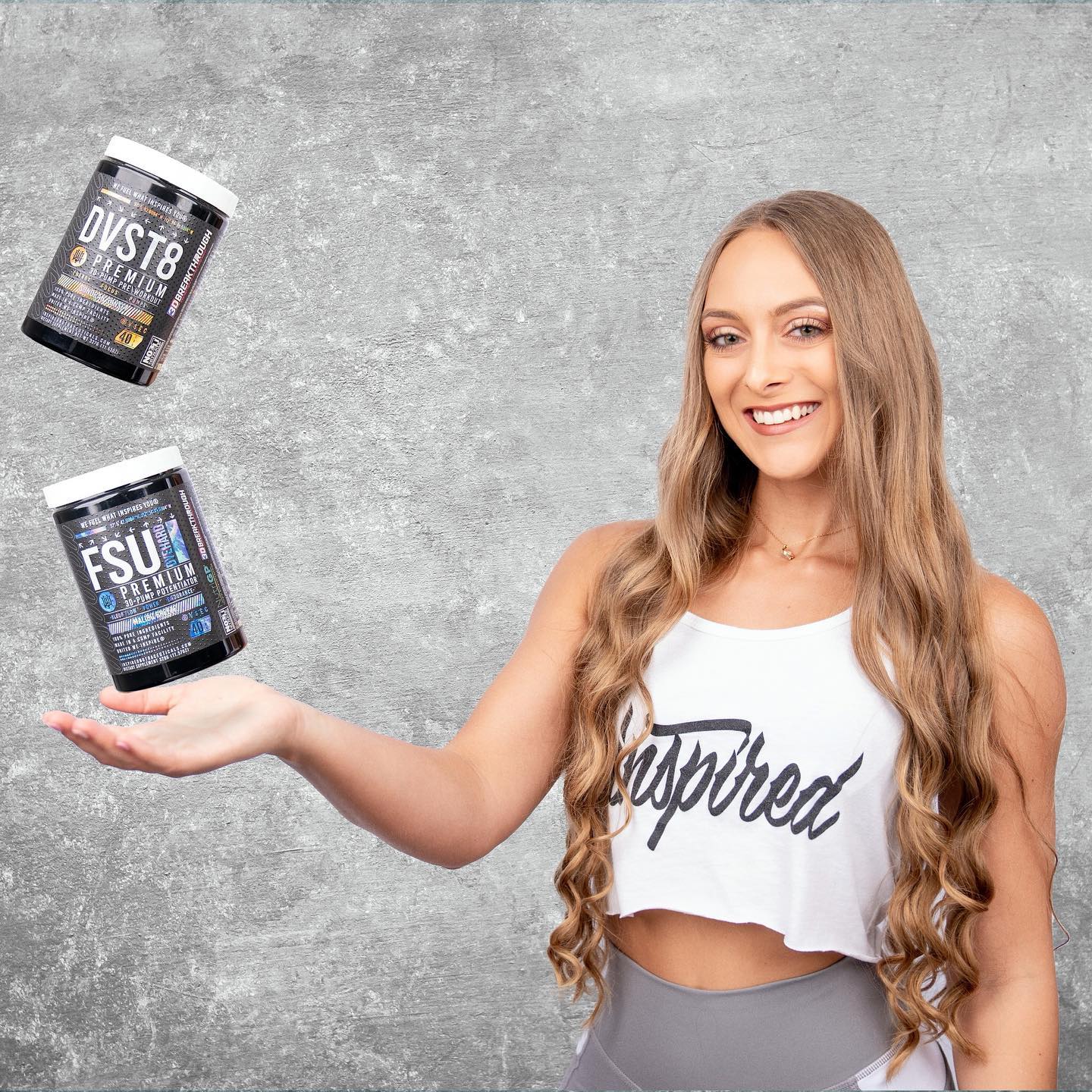
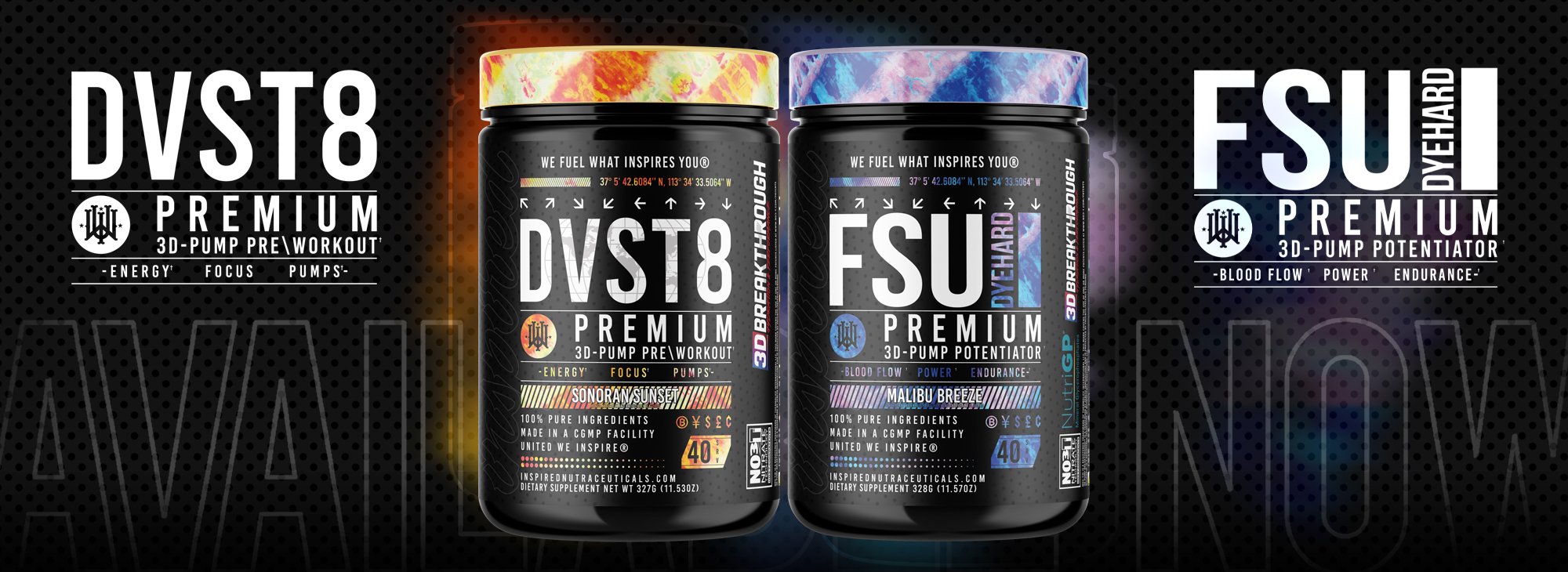


Comments and Discussion (Powered by the PricePlow Forum)